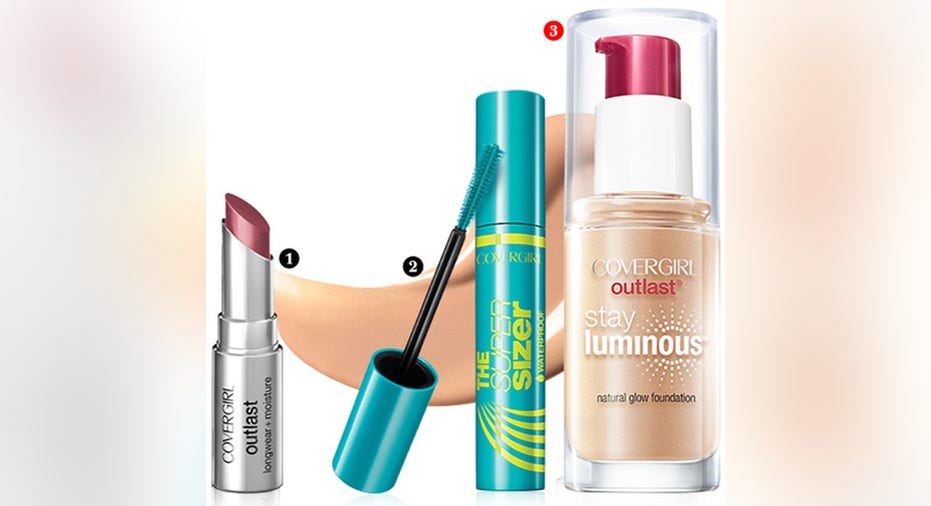Procter and Gamble Spins off $11.4 Billion in Beauty Brands

Image source: Procter & Gamble.
Procter & Gamble(NYSE: PG)officially completed the sale of 41 beauty brands to competitor Coty (NYSE: COTY) on Sept. 30, a deal that has been inked since summer 2015. The deal had far more investor interest than was anticipated, and P&G stock hit an all-time high of $90 per share on that day. Here's why the deal was a success in the short term, but looks even better in the long term.
The final sale
Image source: CoverGirl.com.
The $11.4 billion deal was a stock swap between the two companies in which P&G investors were allowed to choose if they wanted to tender all or part of their shares into the new company, called Galleria,that will later convert to shares of Coty stock. In the swap,P&G sold off most of its fragrances, salon, cosmetics, and hair-color businesses, including big-name brands like CoverGirl and Clairol. Coty will also take over eight P&G factories and around 10,000 workers, as well as about $2 billion in debt.
P&G needed its shareholders to offer up about 100 million shares for conversion, and to make sure it reached that goal, priced the offer at a 7% discount of what the Coty shares were selling for that day. Shareholders combined offered more than 691 million P&G sharesfor the requested tender -- far more than expected or needed. Now that the sale is complete, P&G will accept the tender offer of about 105 million shares for a total value (including the debt portion) of $11.4 billion.
Why the beauty segment was on the chopping block
At one point, P&G owned nearly 170 brands. To spur faster earnings growth, management initiated regrowth strategy in 2014 with one overarching goal -- streamlining operations to focus only on the brands with the highest earnings value. Many brands have already been sold off, including some big names like Duracell batteries, which went toBerkshire Hathaway (NYSE: BRK-A)(NYSE: BRK-B)earlier this year.
The chart below shows how each of P&G's five segments performed in fiscal year 2016, which ended June 30. P&G's beautysegment was one of its worst-performing areas by sales and organic volume.With this huge sale of brands to Coty, the beauty segment, which was the company's third largest, will become its smallest. By divesting much of this segment, P&G will be able to redirect its efforts, as well as the cash from the deal, to focus on its more successful brands.
Data source: P&G fiscal 2016 earnings report. FY = fiscal year. YOY = year over year.
Reason to bet on P&G?
"Now looking forward, we continue to focus on large opportunities that should be within our control," said Chief Financial OfficerJon R. Moeller in the 2016 year-end earnings call, adding, "executing what is the largest transformation in our company's history: reaccelerating top line growth with strengthened category business models. ... This transformation is aimed at delivering balanced top and bottom line growth and leadership value creation."
So far, P&G's strategy seems to be working, and could get much better from here. Sales for the fiscal year 2016, which ended June 30, dropped from $70 billion to $65 billion as some brands were discontinued, but net income increased 50% year over year.
For fiscal year 2017, P&G management has forecast organic sales to grow around 2% companywide, and for earnings per share to grow around 50%. Much of that increase is due to the sale of the 41 brands to Coty. However, withplans for another $10 billion in cost cuts over the next five years, and focusing only on the highest-performing segments, P&G should be able to drive earnings growth for years to come.
A secret billion-dollar stock opportunity The world's biggest tech company forgot to show you something, but a few Wall Street analysts and the Fool didn't miss a beat: There's a small company that's powering their brand-new gadgets and the coming revolution in technology. And we think its stock price has nearly unlimited room to run for early in-the-know investors! To be one of them, just click here.
Seth McNew has no position in any stocks mentioned. The Motley Fool owns shares of and recommends Berkshire Hathaway (B shares). The Motley Fool recommends Procter and Gamble. Try any of our Foolish newsletter services free for 30 days. We Fools may not all hold the same opinions, but we all believe that considering a diverse range of insights makes us better investors. The Motley Fool has a disclosure policy.